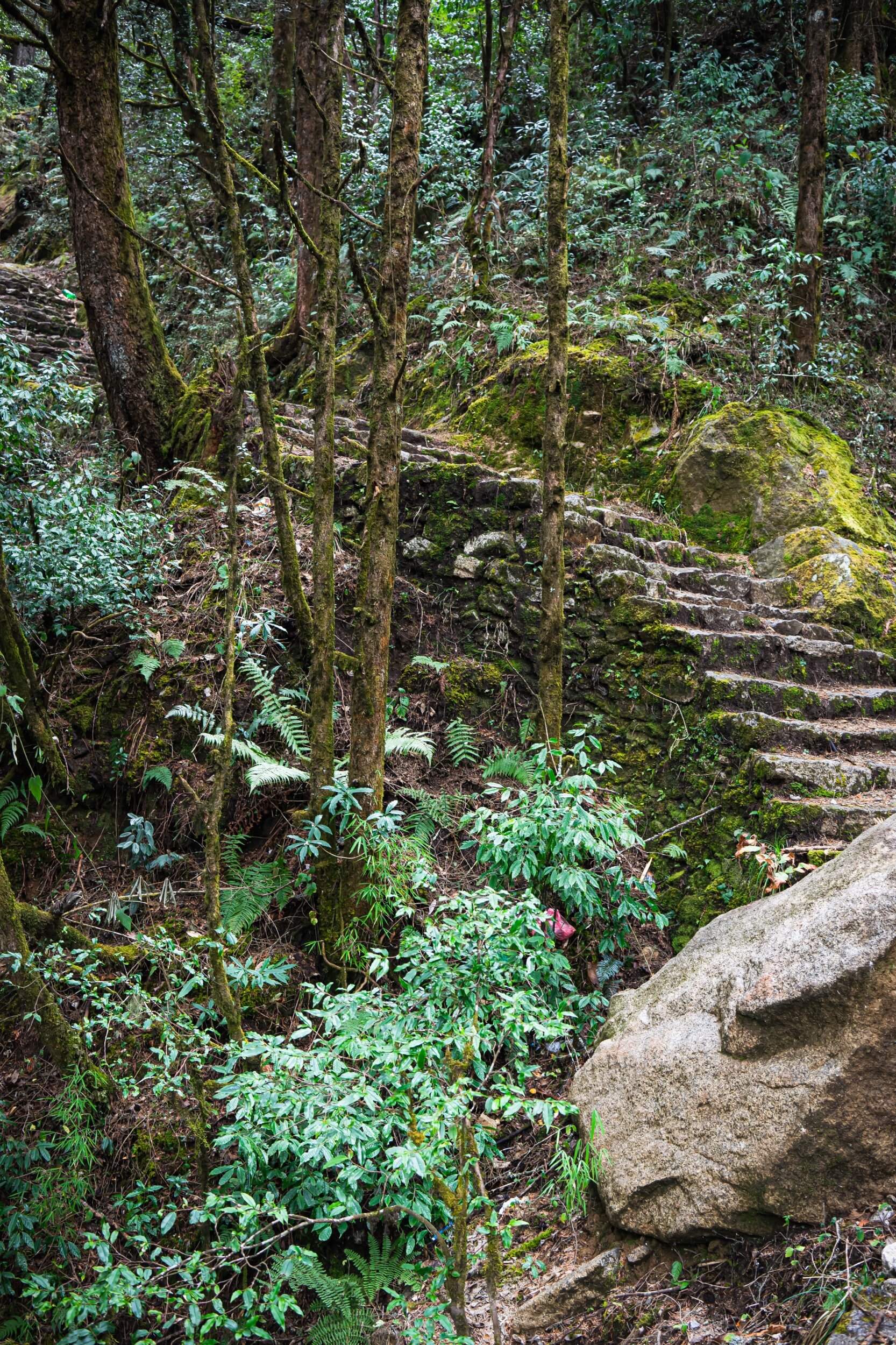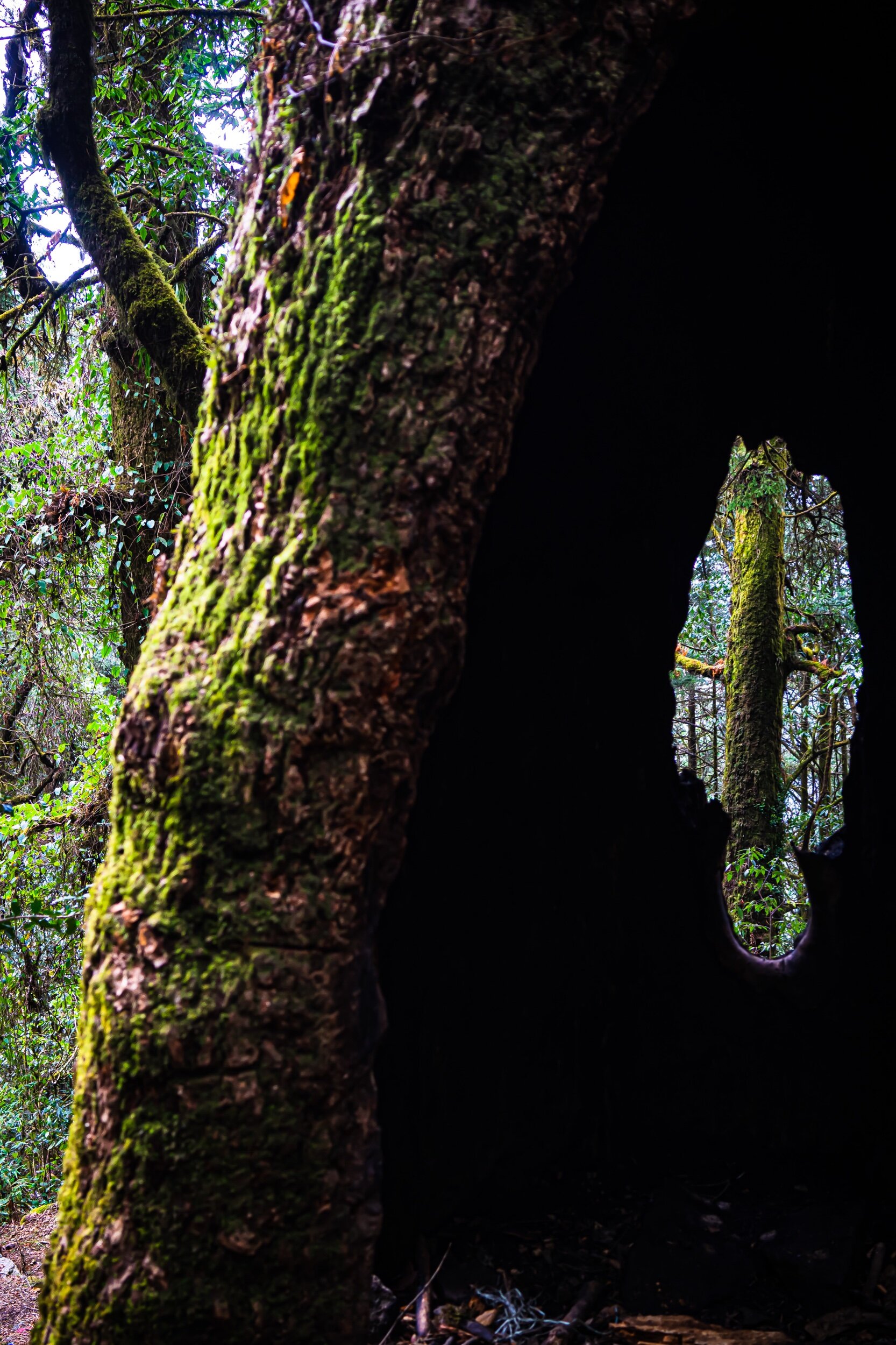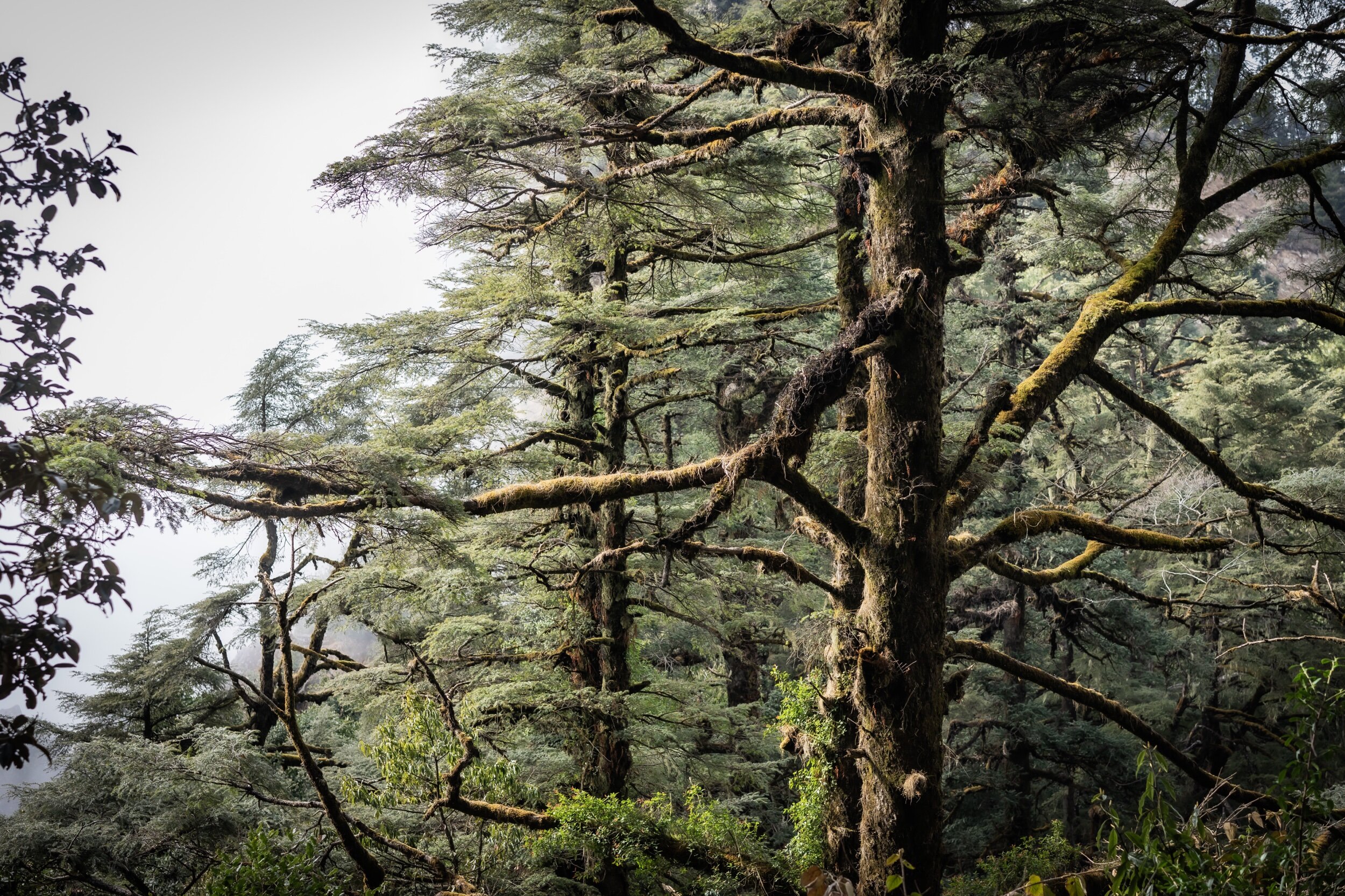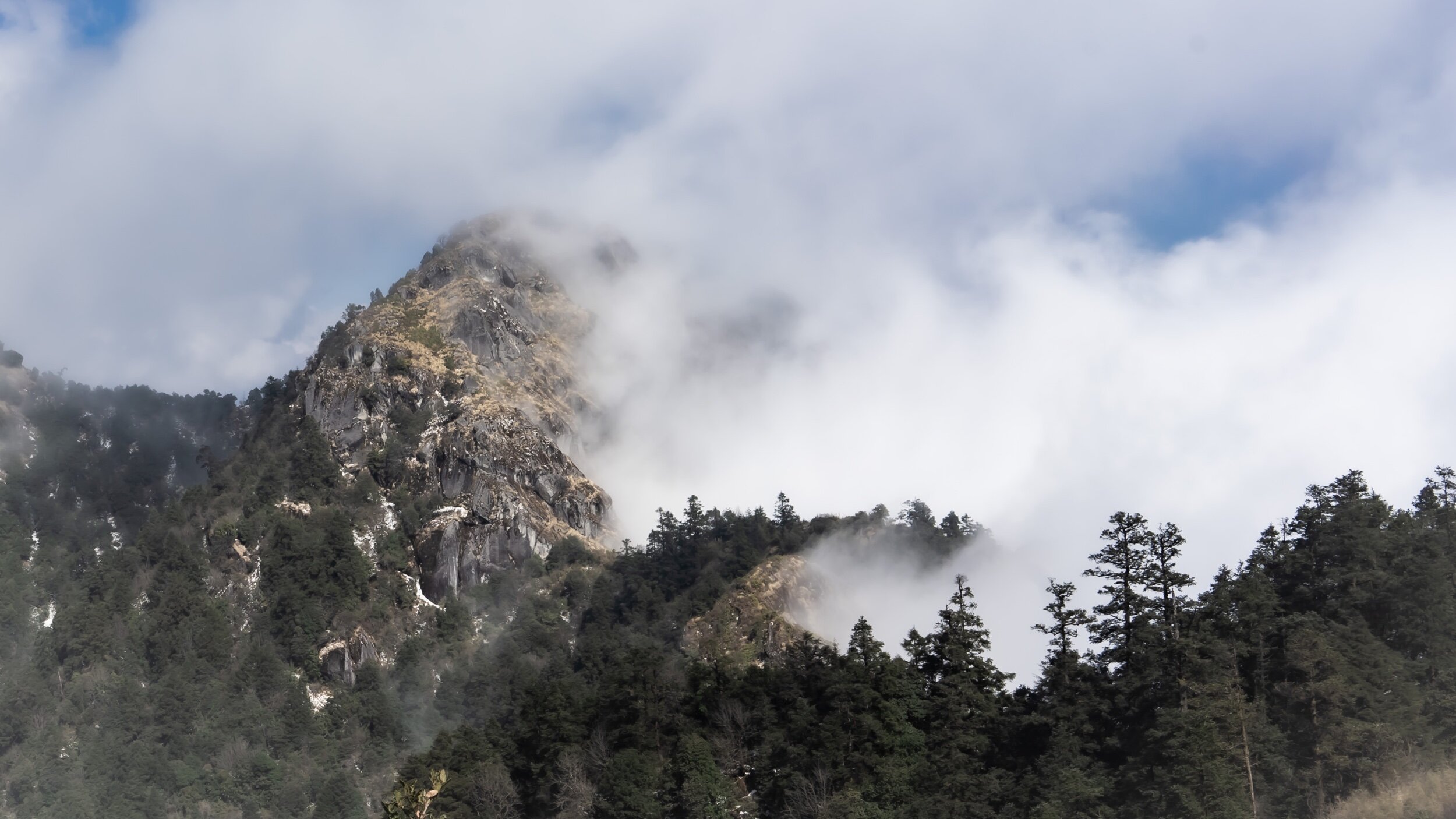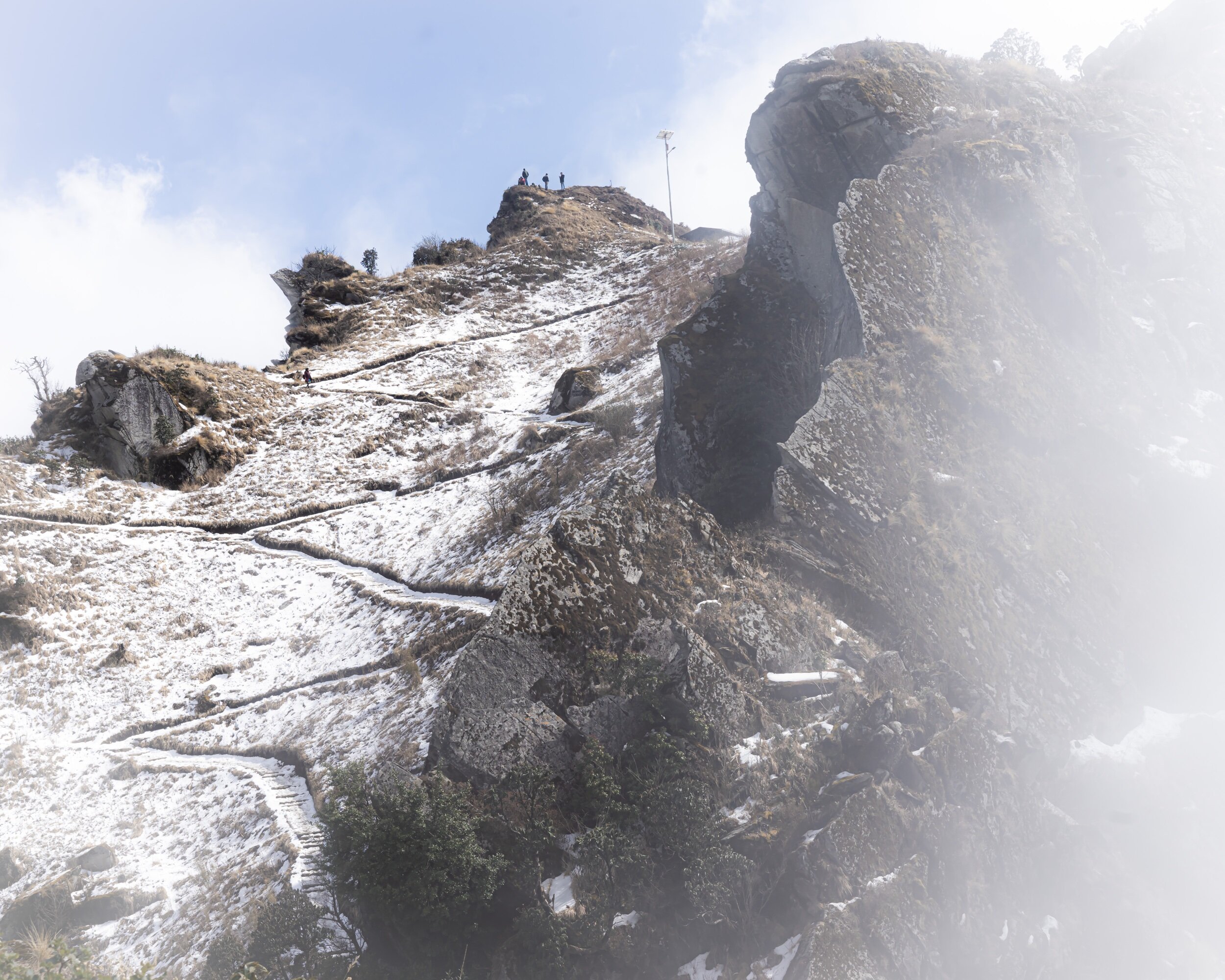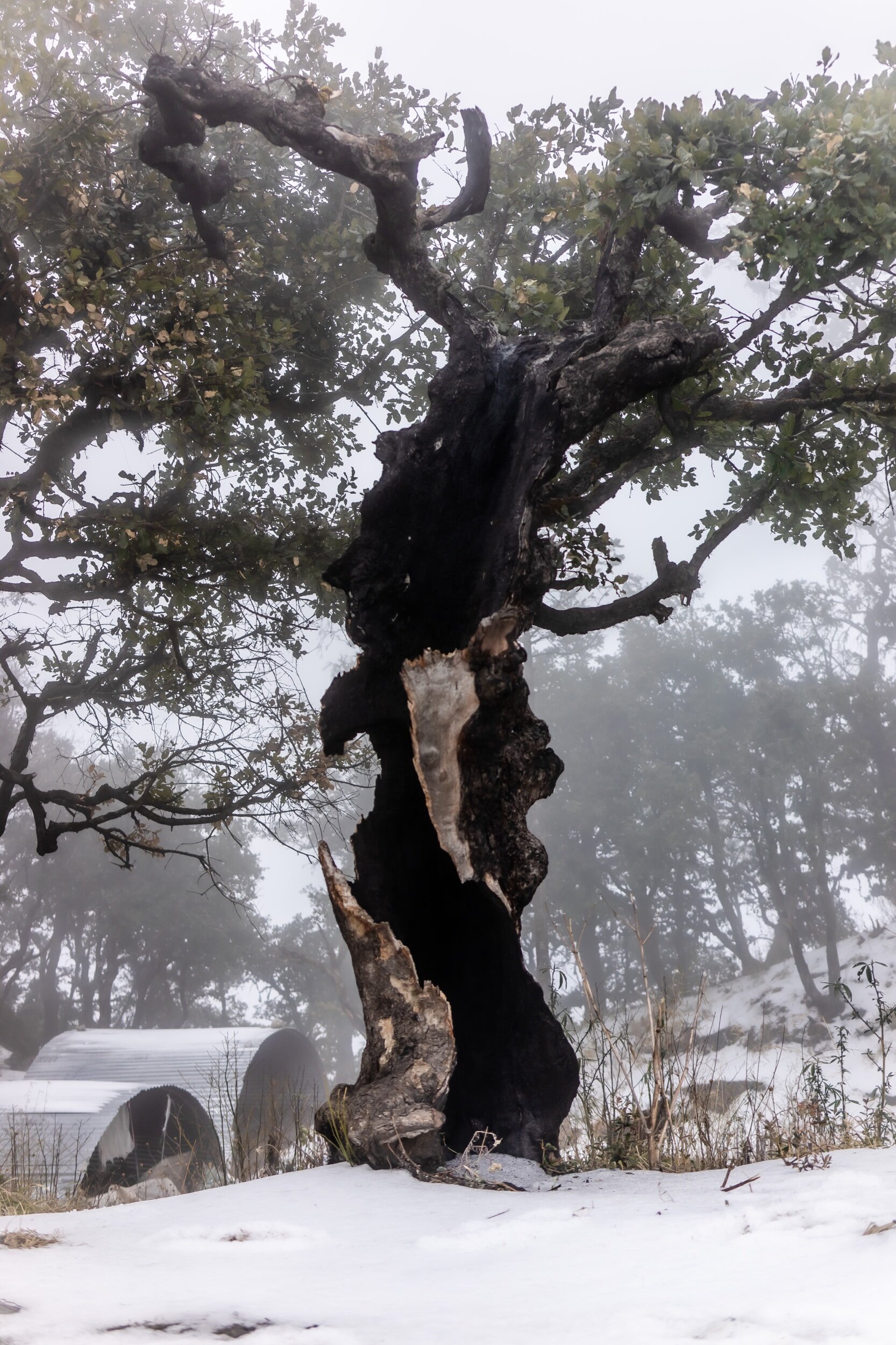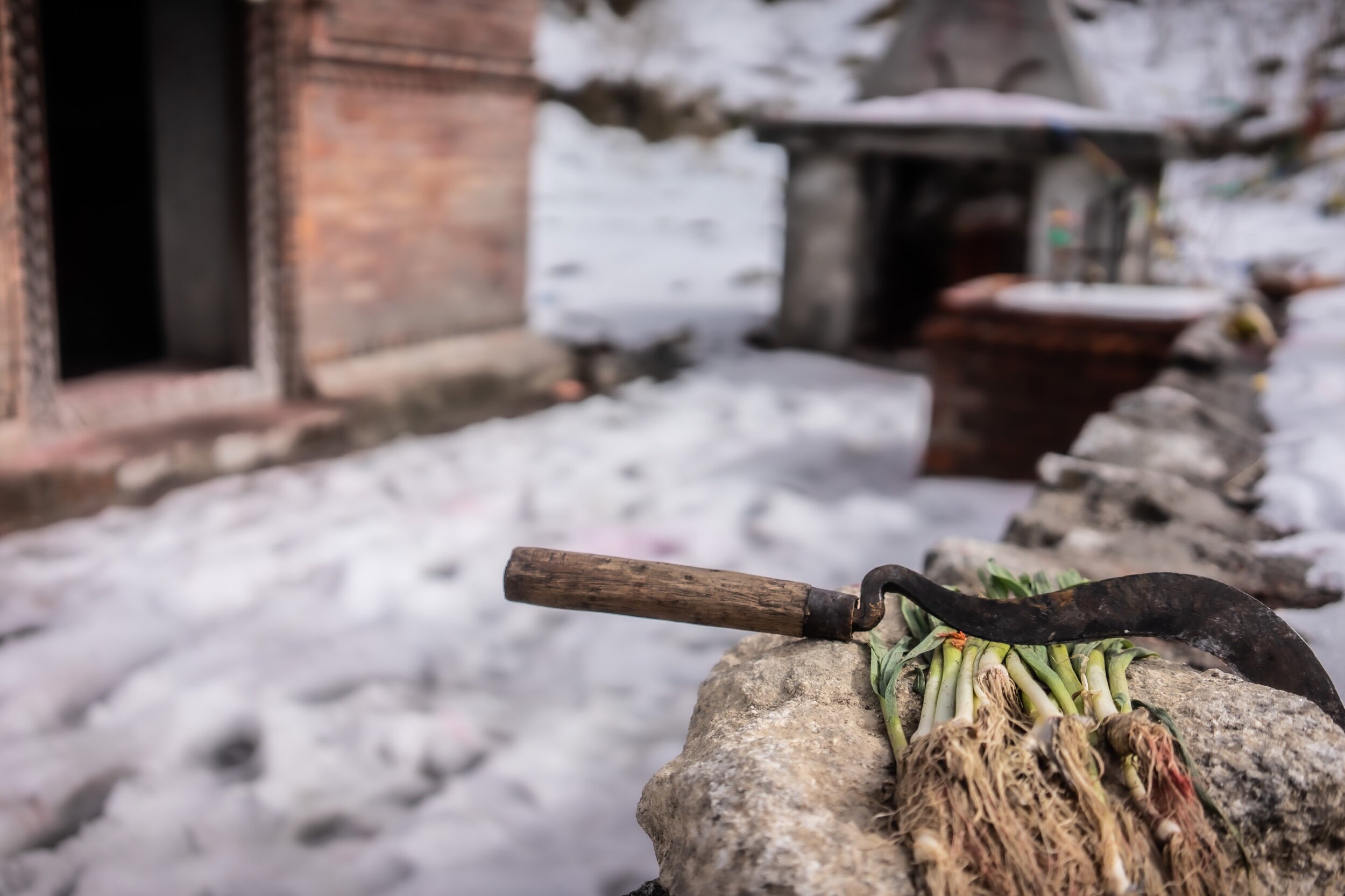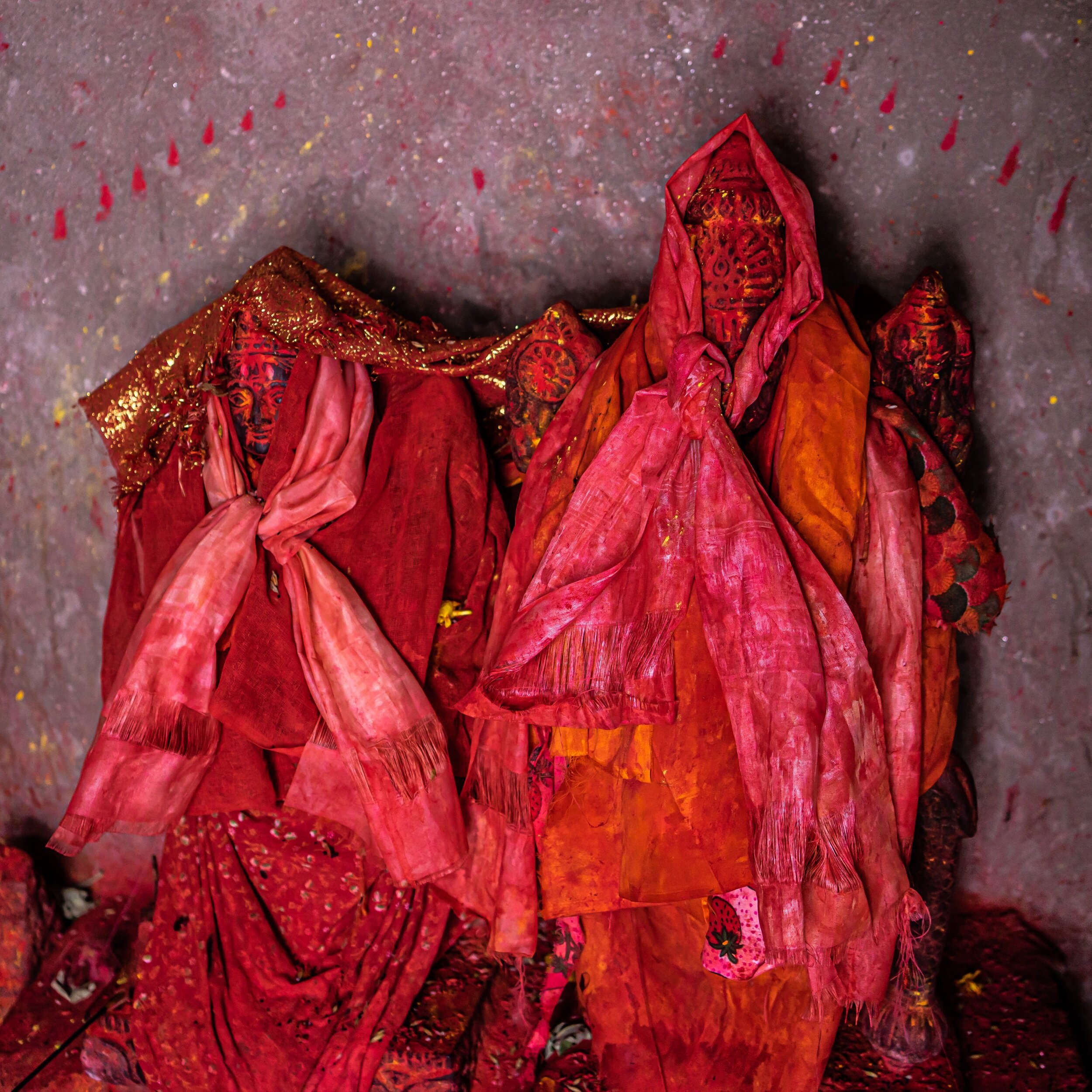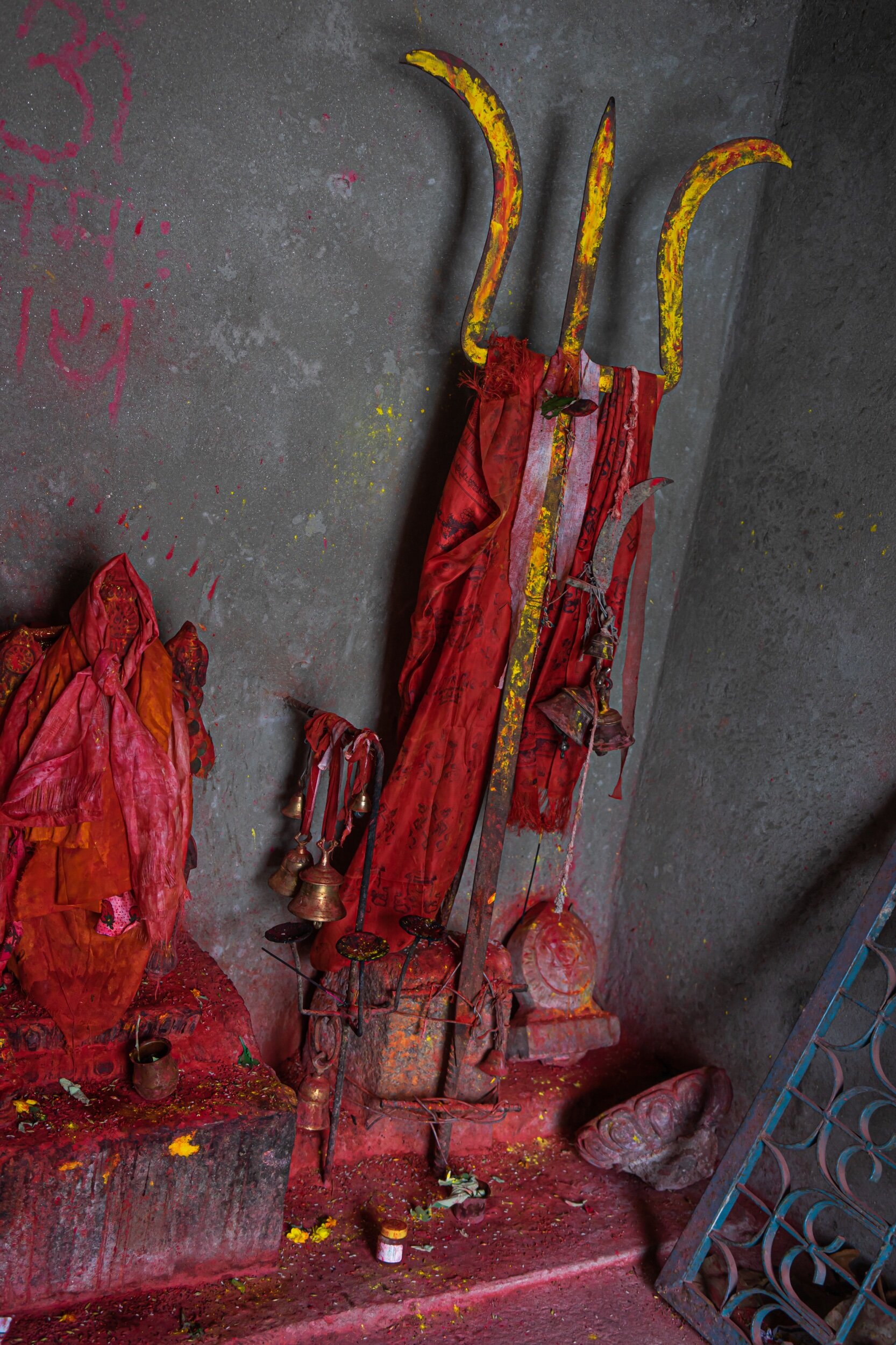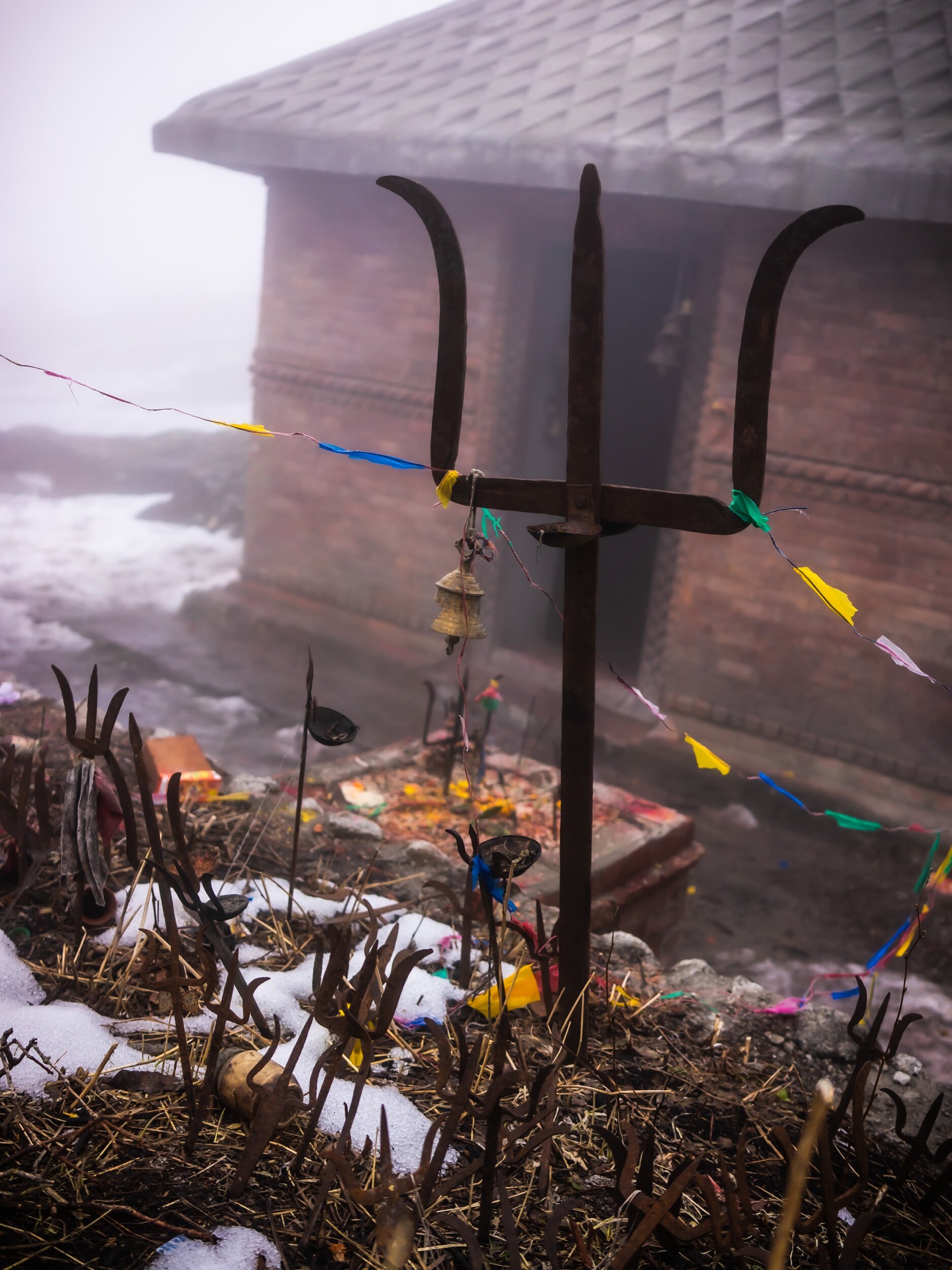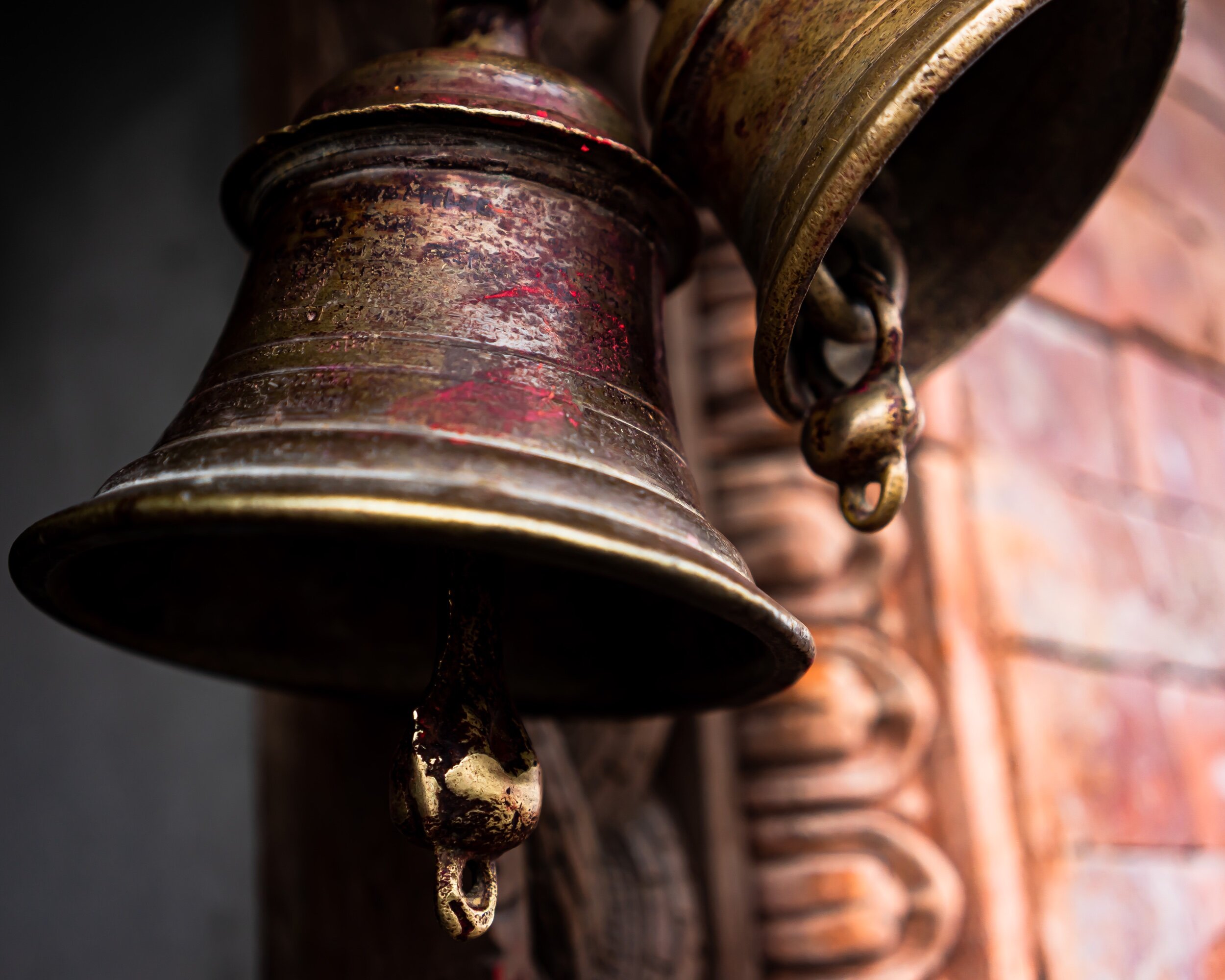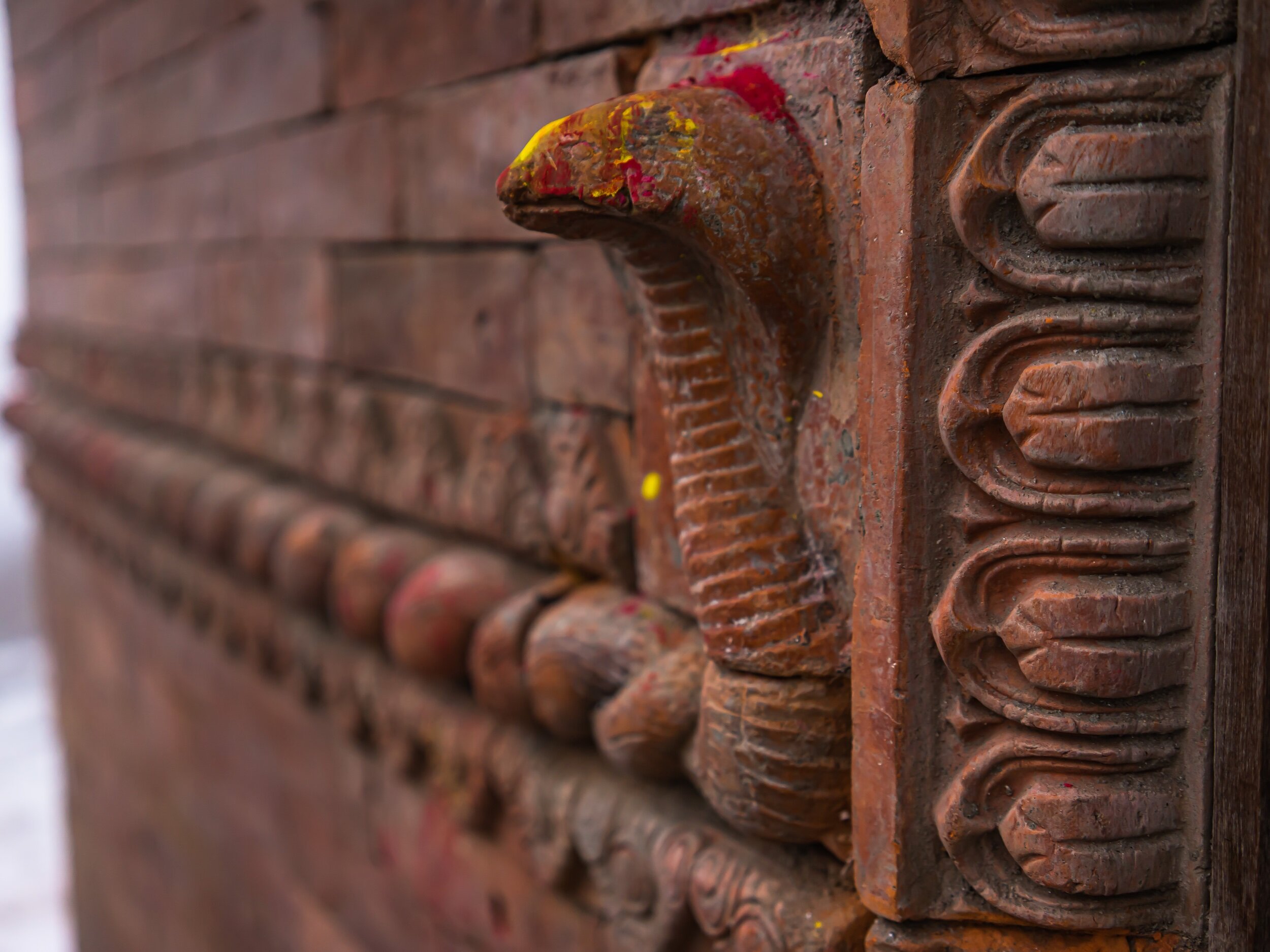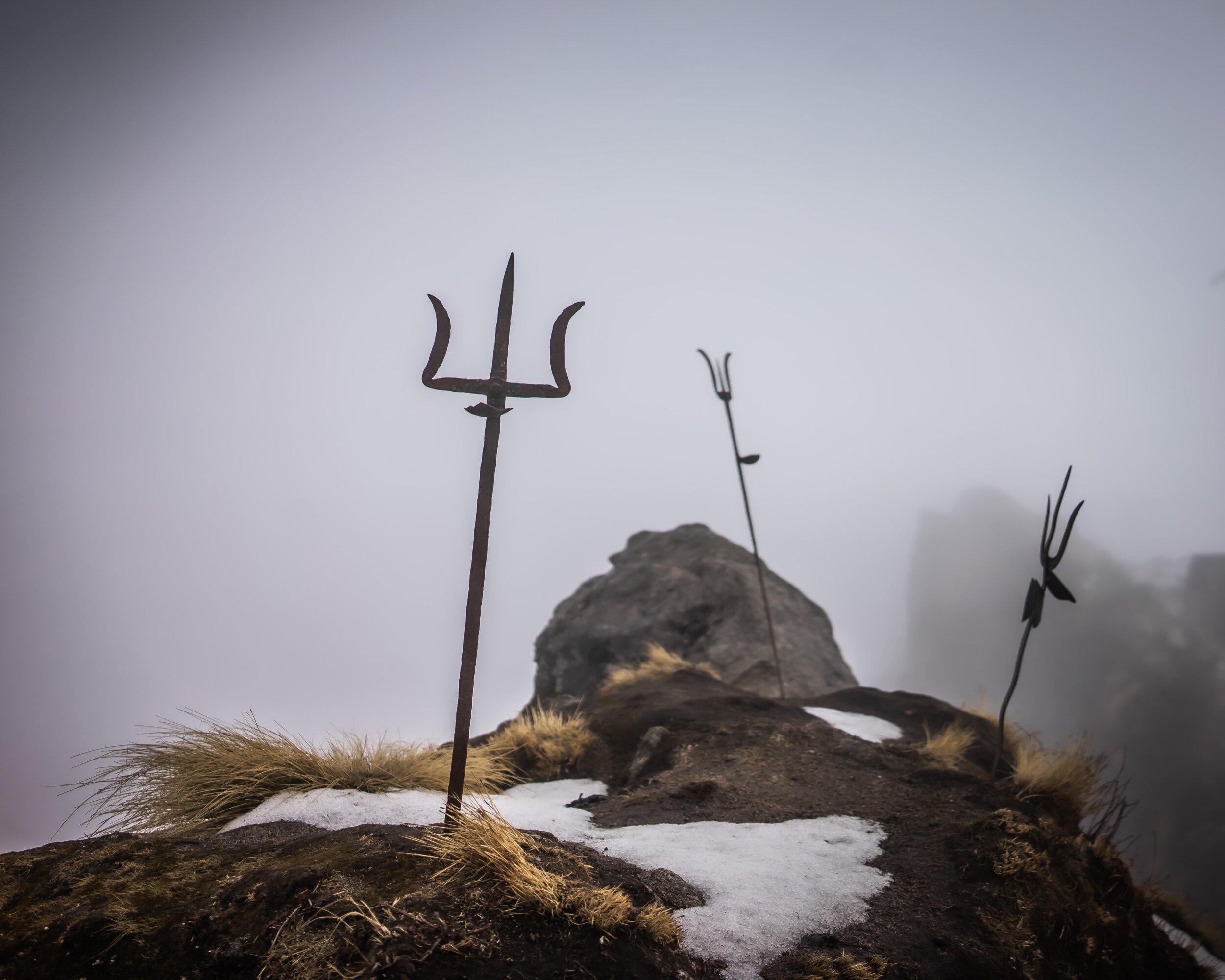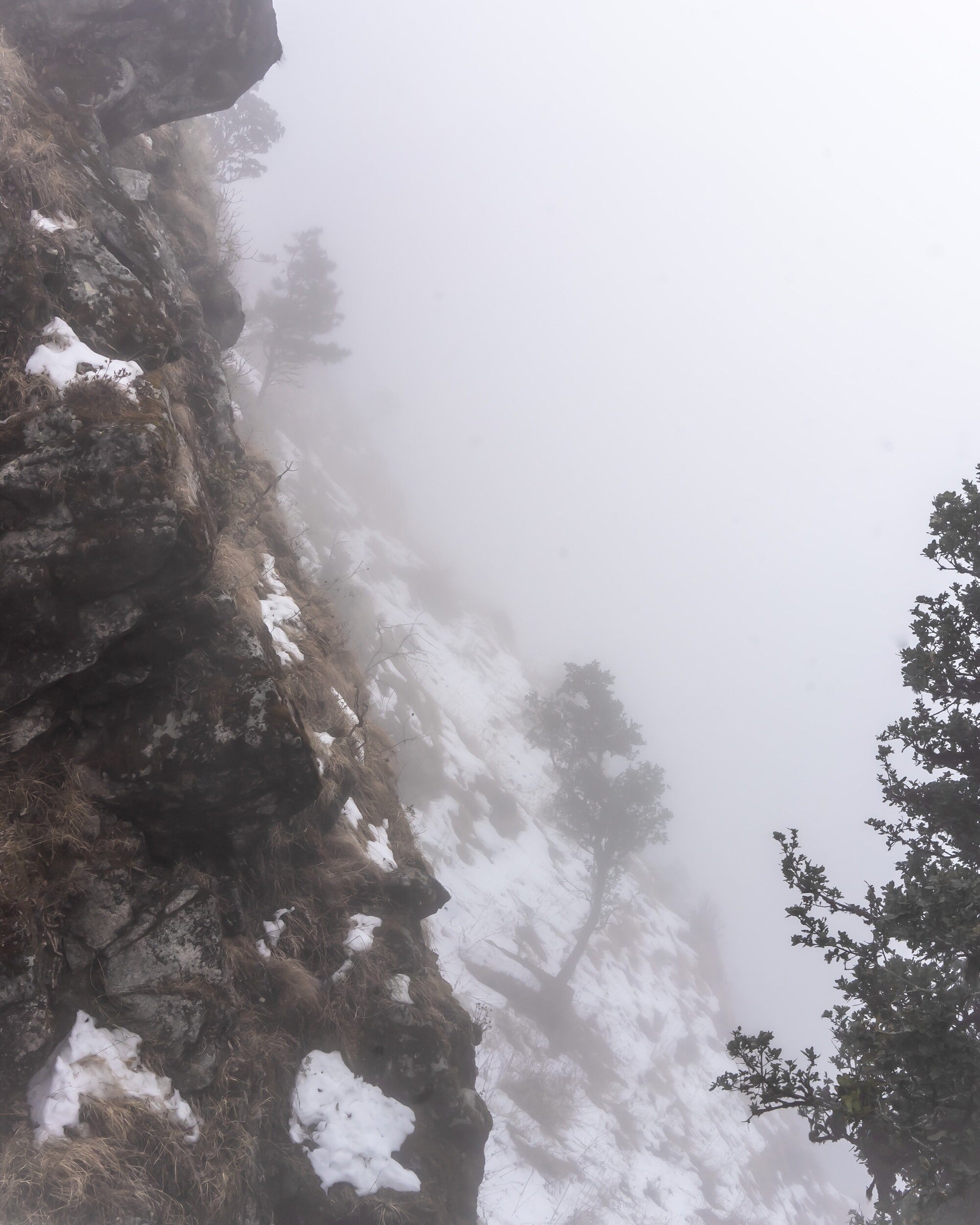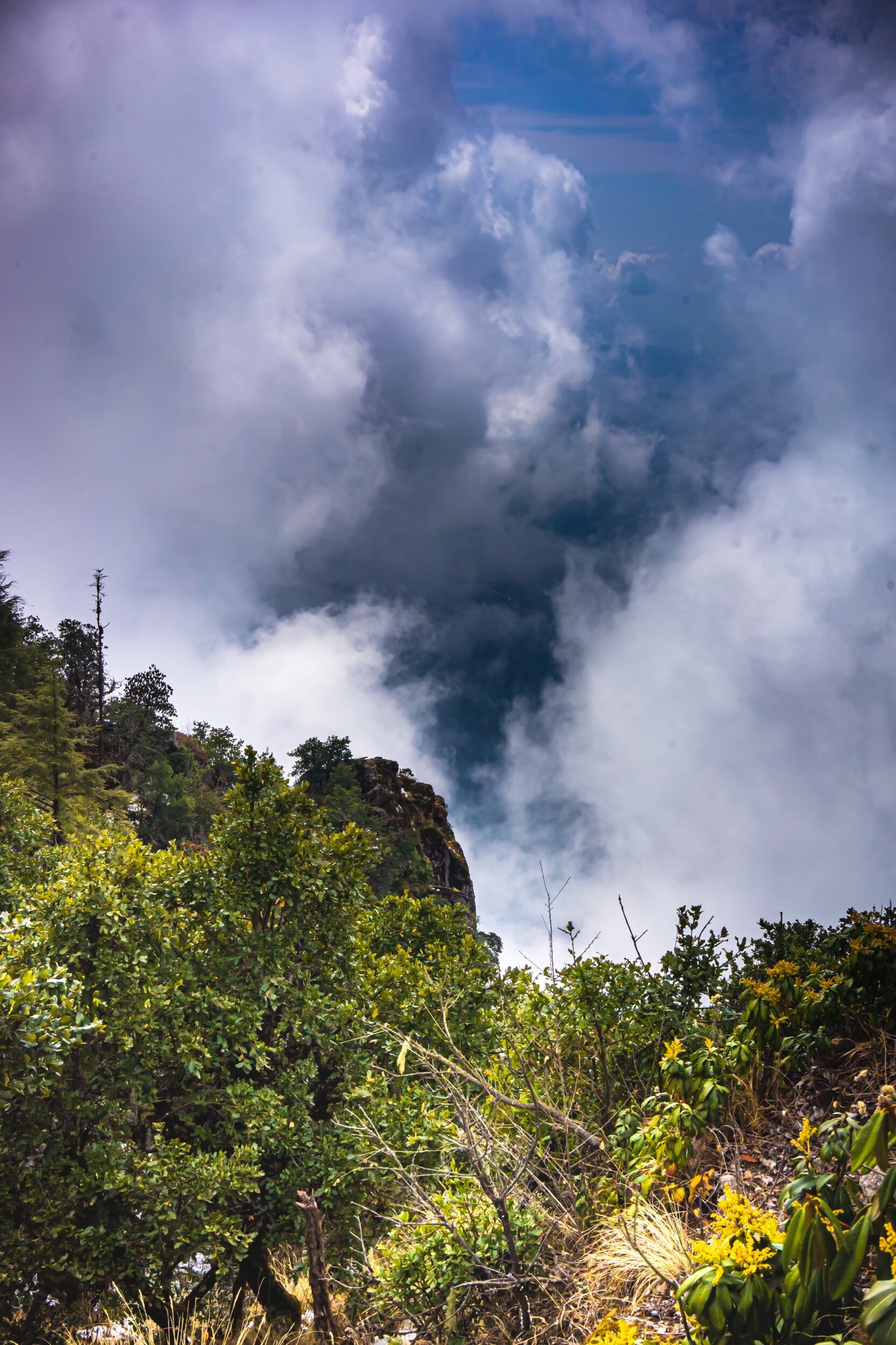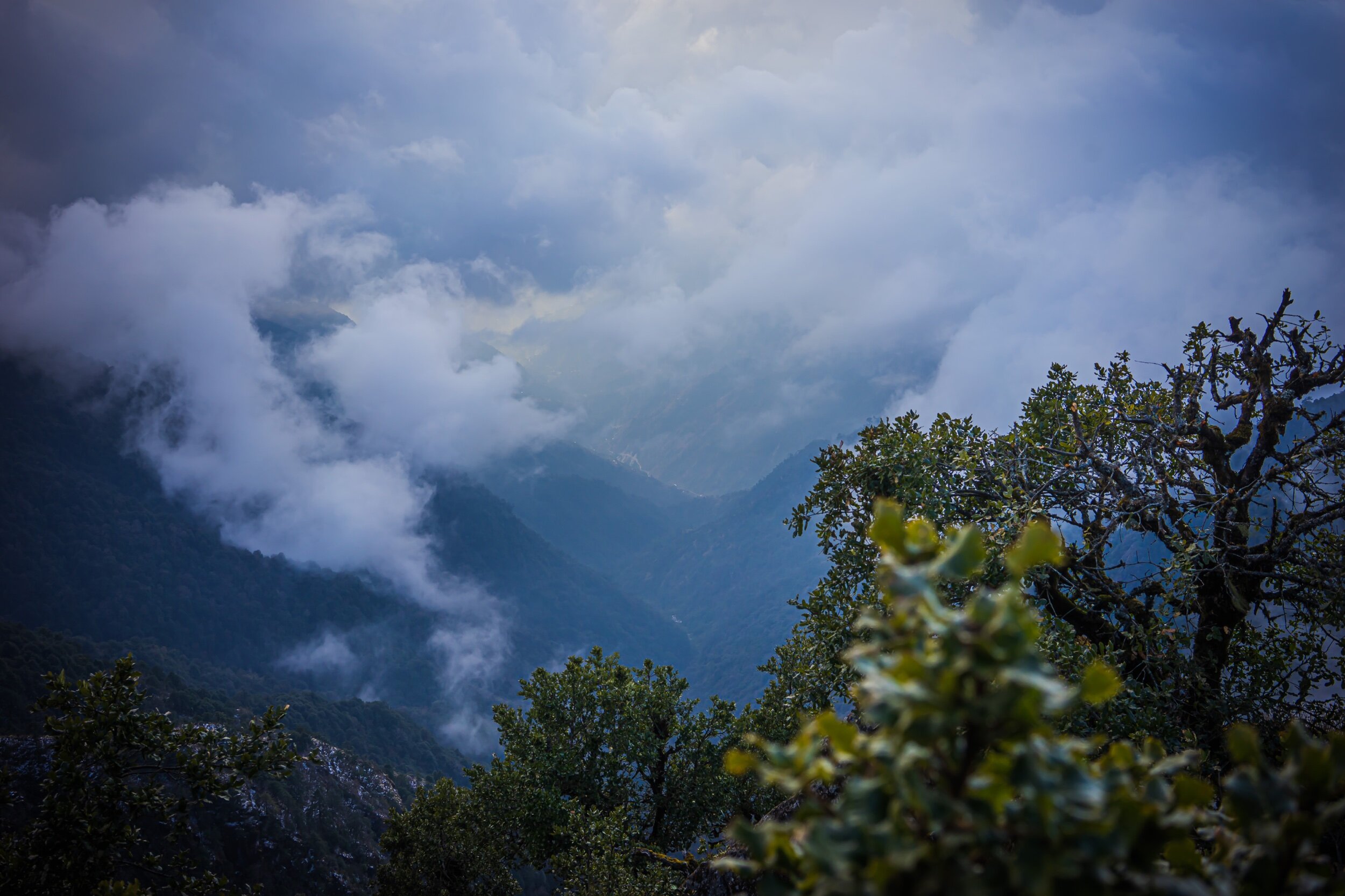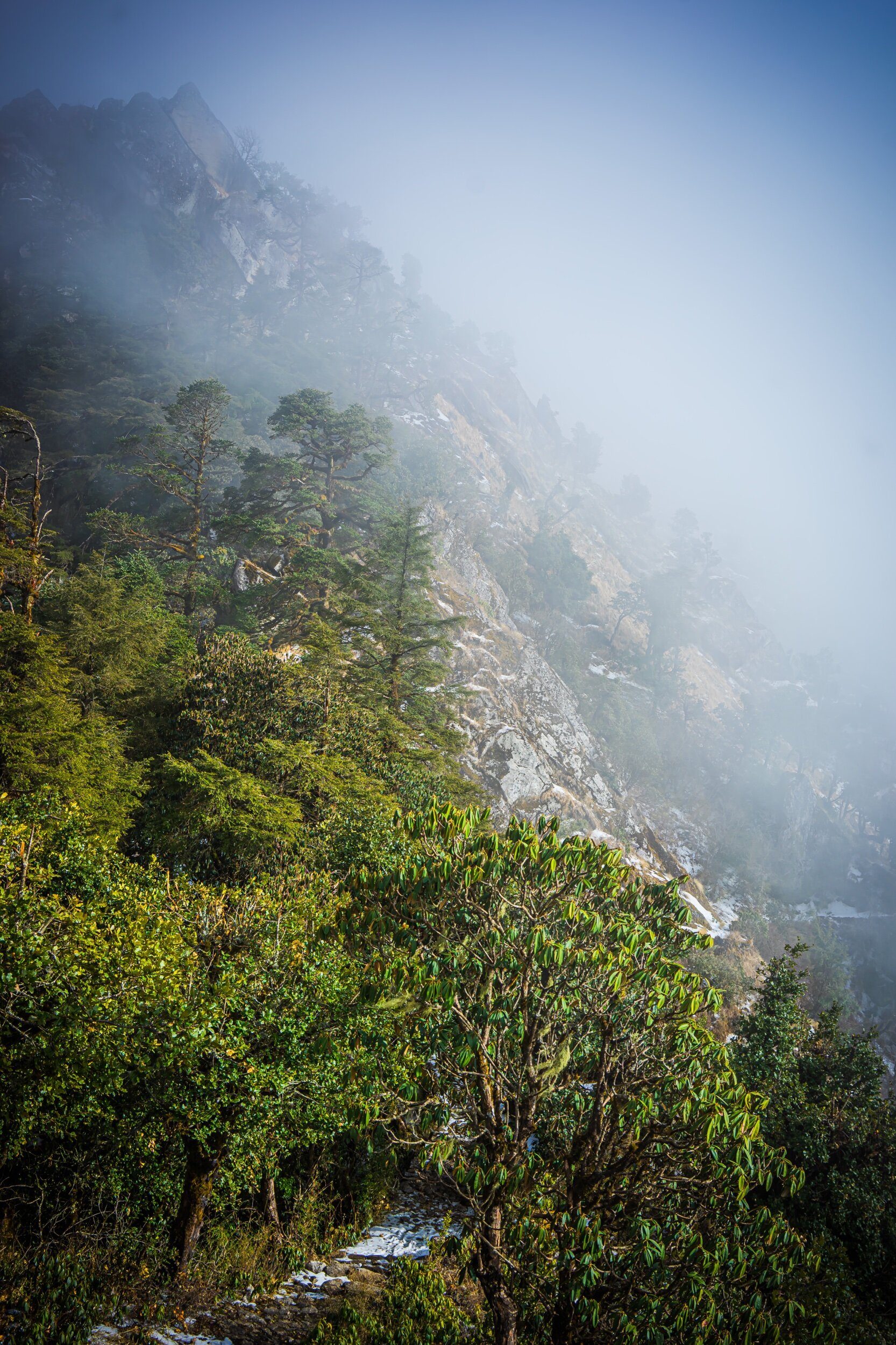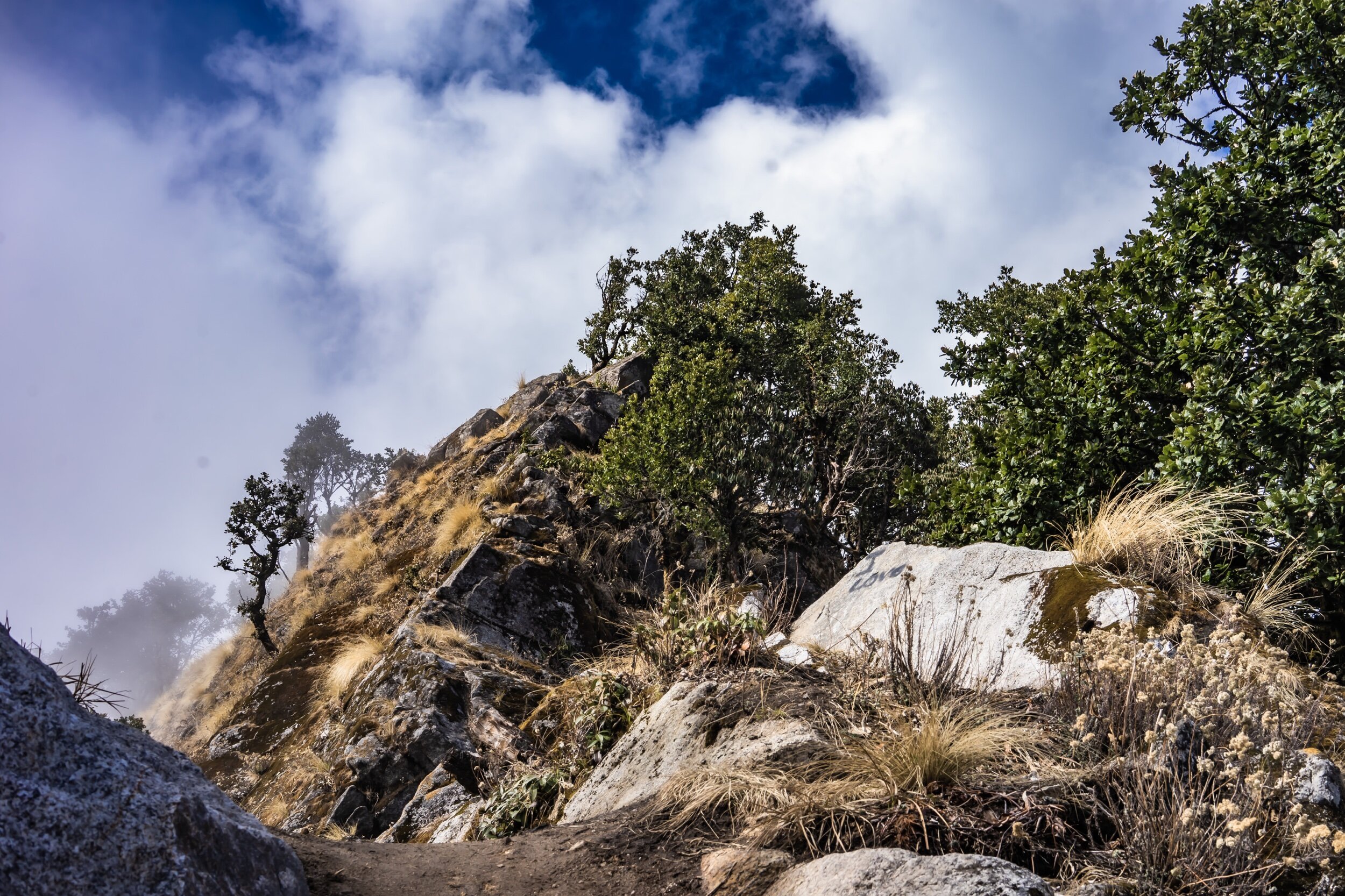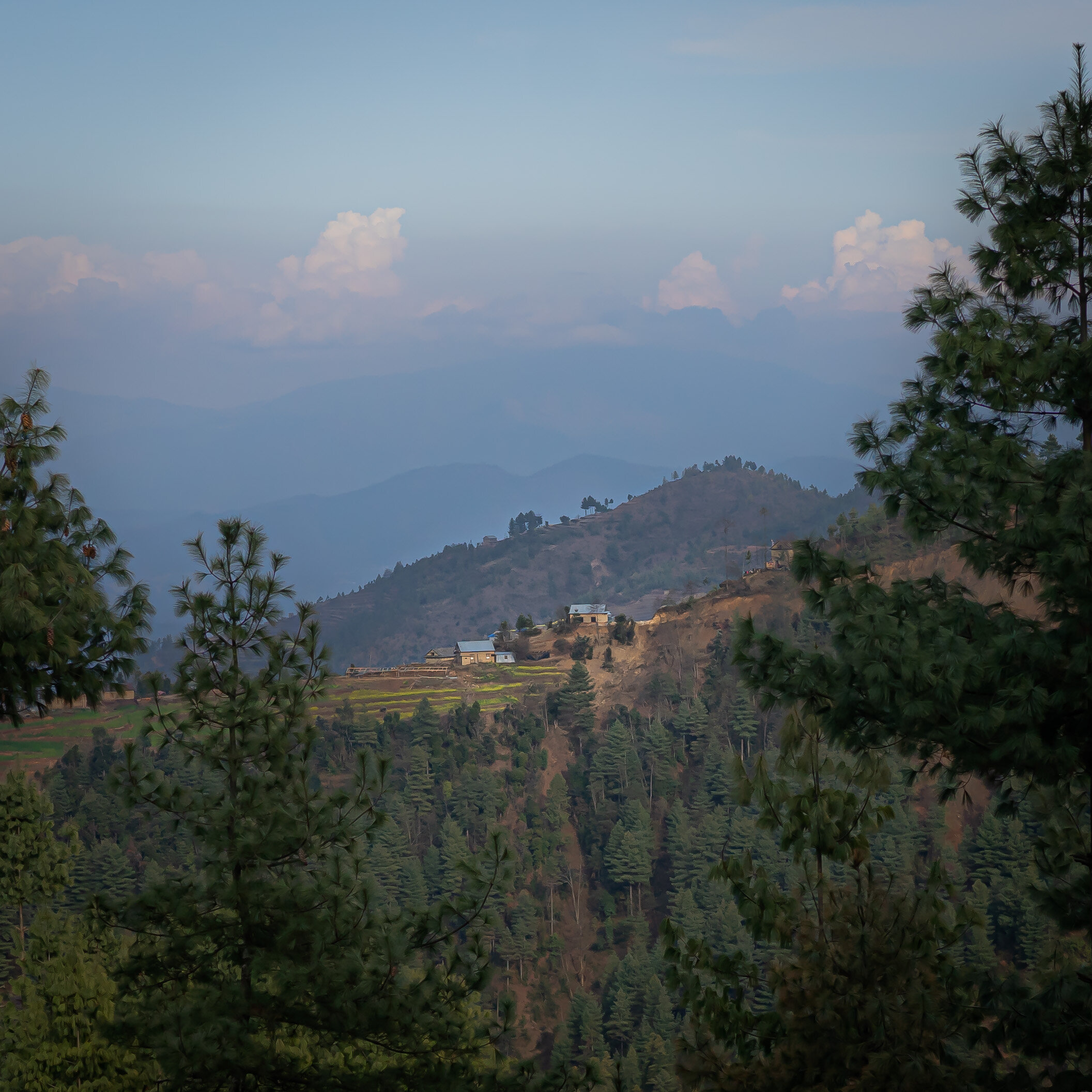A few days ago I took a beautiful solo walk to Narayanthan temple. It is a on a peak, about the same height as Mount Mahabharat, at the top of another ridge line nearby. The temple at the top is a Vishnu temple. Vishnu is the Hindu deity known as the preserver, represents sattva, and is associated with the good in the world.
The walk to the temple had been calling me for some time, but I hadn’t made it work yet to go, so I was excited when I figured out where the trail likely split to head to the top. I’d tried to find it another time but had walked up a side trail that eventually disappeared, just a couple hundred feet and maybe quarter mile from the summit. It was another lovely adventure. It takes about 4 hours round-trip of walking to complete, going at a strong but comfortable pace, gaining about 2,800 feet (850 meters) in 3 miles (4.8 km) for a 6 mile round trip.
After the rains the dry streambed filled with water, creating small cascades and clear pools.
The walk from the homestay is beautiful. If you are coming from Kathmandu, you would catch transport to Dhunkharka and walk about one hour up to the collection of village homestays. After the steep hike up the dirt road through the upper village of Bethanchowk, you take a trail that starts out rolling, and after about 10 minutes of walking through a lovely forest for a few minutes along a steep ravine, the riverbed comes up to meet you and you walk alongside the seasonal stream for a while, the granite boulders becoming quite large in places. Because of the recent precipitation, the stream was running in some places, adding to the ambiance with the soft sound of running water.
Ascending through the jungle forest of the mid hills of Nepal.
After passing a huge landslide, there is a break in the trail. We’ve done some group forest meditations by going just up the left fork, and I had always gone that way before. The right fork starts to ascend the hillside, in short and steep switchbacks. Heading up the switchbacks the forest becomes even more verdant and beautiful. The trail follows uphill along steep, cascading streams and step-pools, the shades of green multiply.
Eventually there is another fork; heading left continues uphill, and soon there is a rock staircase, making the footing better, but the climb is still grueling. The rock work is incredible; I wonder how long it has been there, who maintains it. There are many conifers that have their heartwood burned out but still survive and even thrive on their cambium. Their twisting shapes are fascinating to look at.
At the next junction, another left, to begin more or less following the ridge line; sometimes walking on one, sometimes the other, or right along the top of the ridge. This is mostly covered in a type of oak that also responds positively to fire; some of these trees are half burned up along one side and then completely healthy on the other. This elevation is completely in clouds that are constantly changing, creating a dramatic and ethereal atmosphere.
The only downsides of this walk were the amount of trash, and the number of really loud people. This situation with the trash makes me sad; I would want to pick it up or organize a group to do so.. at the same time, it’s not like I’ll be able to make any cultural change; there is also too much on this particular trail. Maybe I’ll have a chance to do this on Mahabharat in the next few days. This first day I summited, it was a Saturday (Nepal’s day off) and the amount of people was off-putting, more so because many of them were really loud, shouting to each other up and down the trail and around the temple itself. Also, being a female on my own, I got a lot of strange looks.
Shiva tridents on the ridge above the temple, with the ever-shifting sky opening up. To the left on this ridge is a drop straight down a couple hundred feet.
Arriving at the temple was still amazing. It is a small building made of brick, square; outside there is an alter colorfully covered in red and yellow pigments, and numerous Shiva tridents surrounding. An obelisk with a Buddha statue on the top of it, probably 8 feet off the ground, is situated outside the opening. There are small offerings of incense, flowers, scattered inside. During my first ascent I didn’t stay long due to the number of people, but I went again a few days later with a friend from the homestay; upon our arrival the sky magically opened up from dense clouds to a clear blue above us. We spent a while up there, wandering around the peak, and taking in the views that continuously changed with the swift movement of the clouds.
A small shrine outside the temple, decorated with pigments and offerings of incense, rice, and flowers.
While the Mahabharat hike is completely amazing as well, these two trails have different feels. Narayanthan is more developed, and the part along the rock path really defines that; it also adds a charm. Having a destination like a temple is appealing, but knowing it could be traveled by a lot of people, especially if the culture is to be loud and throw thrash, takes away some of the allure. On Mahabharat, the only people you see are locals, and they tend to be in the forest harvesting fodder for their cows, carrying loads on these steep trails that I could never imagine even budging. The entire length of the Mahabharat is sharply uphill, whereas Naranyathan has very steep sections as well as areas of rolling ups and downs. Mahabharat has more of an almost wilderness appeal, as the trail is smaller (but still distinct) to follow, and encounters with others are less common. Both trails are amazing walks through the local jungly forest!
Enjoy a few more photos from my trip in the slideshow below!
